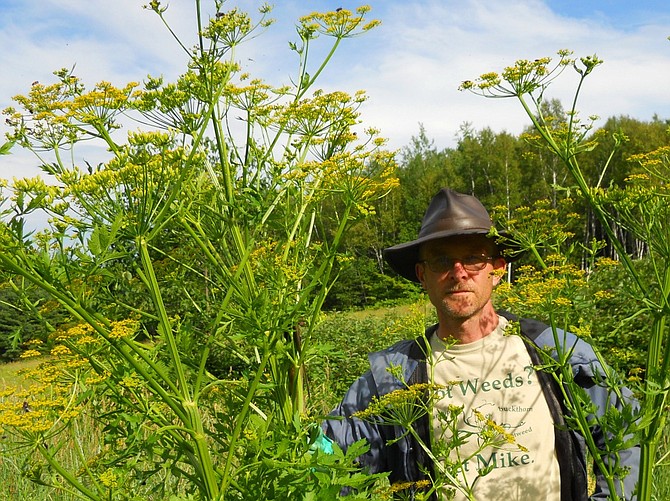NEWPORT — A common plant found along roadsides and open areas may not appear harmful, but the Health Department is warning Vermonters that its sap contains a chemical that causes serious skin reactions when exposed to sunlight.
The sap, or juice, inside the stems, leaves, flowers, and fruits of the wild parsnip, also called “poison parsnip,” contains chemicals called psoralens. Contact with the sap causes a chemical burn in the presence of sunlight, a condition known as phytophotodermatitis.
The sap is exposed when the plant is cut or knocked down. Skin reactions begin about 24 to 48 hours after contact with the sap and sunlight and include redness, burns similar to second-degree sunburns, painful rashes, and raised blisters.
Giant hogweed also contains the same chemicals.
Wild parsnip is an invasive species that can grow almost anywhere but prefers disturbed areas like roadsides and open areas. The plant is a member of the carrot family reaching heights of two to four feet with leaves that resemble celery leaves and yellow flowers that look similar to Queen Anne’s Lace.
The Vermont Department of Health advises people to avoid skin and eye contact with wild parsnip sap.
If you need to work with the plant:
Wear clothing that covers your arms and legs.
Wash clothes that come in contact with the sap.
Work with the plant on cloudy days, and always wash your skin immediately after coming in contact with the sap.
If you are using string trimmers or power mowers in areas where this plant grows, wear eye/face protection, in addition to long pants, long sleeves, and gloves.
If you get sap on your skin:
Wash the skin thoroughly with soap and water as soon as possible.
Protect the exposed skin from sunlight for at least 48 hours.
If you experience a skin reaction, call your health care provider.

